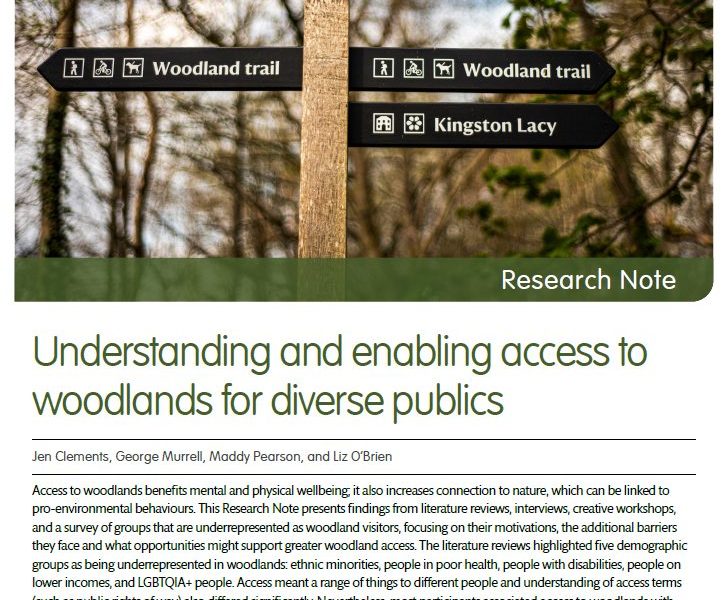We use some essential cookies to make this website work.
We’d like to set additional cookies to understand how you use forestresearch.gov.uk, remember your settings and improve our services.
We also use cookies set by other sites to help us deliver content from their services.

This Research Note presents findings from research with groups that are underrepresented as woodland visitors; focusing on their motivations, the additional barriers they face and what opportunities might support greater woodland access.
How will the changing environment impact bark-boring insects? Climate change projections indicate more frequent extreme weather events, such as storms, heatwaves, droughts, and floods. One of the likely consequences of this will be an abundance of stressed trees with weakened defences against pests, creating favourable conditions for some species of...
This report describes the outcomes of a recent Forest Research project which aimed to improve understanding of land managers decision-making concerning the uptake of natural colonisation as an approach to woodland creation.
This report presents ten key insights about working with natural processes for woodland creation that have emerged from our research.
Overview Resilience to climate change, the threat of pests and diseases, tackling the biodiversity crisis, and the implications of these issues for the future of the tree and woodland sector are necessarily being foregrounded in management discussions. Sycamore is a naturalised, fast-growing, and adaptable species with increasing evidence to support...
This In Brief explores the results from a survey of 1177 visitors across three locations to understand what they thought about dead and decaying trees in the landscape.
This publication provides statistics on access to woodland in England, revealing the percentage of households that are within different distances of woodlands of different minimum areas in England.
This document is an Annex to the Welsh Plant Health Surveillance Network Programme 2022 Review, and reports on the third year of the WPHSN activities undertaken on behalf of the Welsh Government. It describes a network of insect and spore traps placed at strategic woodland sites across Wales to monitor...
This report summarises the results of a national baseline survey on public attitudes to plant health.
This In Brief explores experiences of woodland volunteers in Great Britain, providing insights into how people might be supported to start or continue volunteering.
Overview This review describes qualitative longitudinal research (QL), the different approaches used for QL research in the social sciences, and the benefits and limitations of this methodology. It then comments on the feasibility and benefits of using this methodology to understand the social implications of forest-based interventions. The review has...
Overview What leads some farmers to dramatically increase the number of trees on their land? What role do social and cultural values play? And how do values and behaviour interact? This Research Note presents accounts from four farms which have substantially increased tree cover, foregrounding the farmers’ stories to focus...
Cookies are files saved on your phone, tablet or computer when you visit a website.
We use cookies to store information about how you use the dwi.gov.uk website, such as the pages you visit.
Find out more about cookies on forestresearch.gov.uk
We use 3 types of cookie. You can choose which cookies you're happy for us to use.
These essential cookies do things like remember your progress through a form. They always need to be on.
We use Google Analytics to measure how you use the website so we can improve it based on user needs. Google Analytics sets cookies that store anonymised information about: how you got to the site the pages you visit on forestresearch.gov.uk and how long you spend on each page what you click on while you're visiting the site
Some forestresearch.gov.uk pages may contain content from other sites, like YouTube or Flickr, which may set their own cookies. These sites are sometimes called ‘third party’ services. This tells us how many people are seeing the content and whether it’s useful.